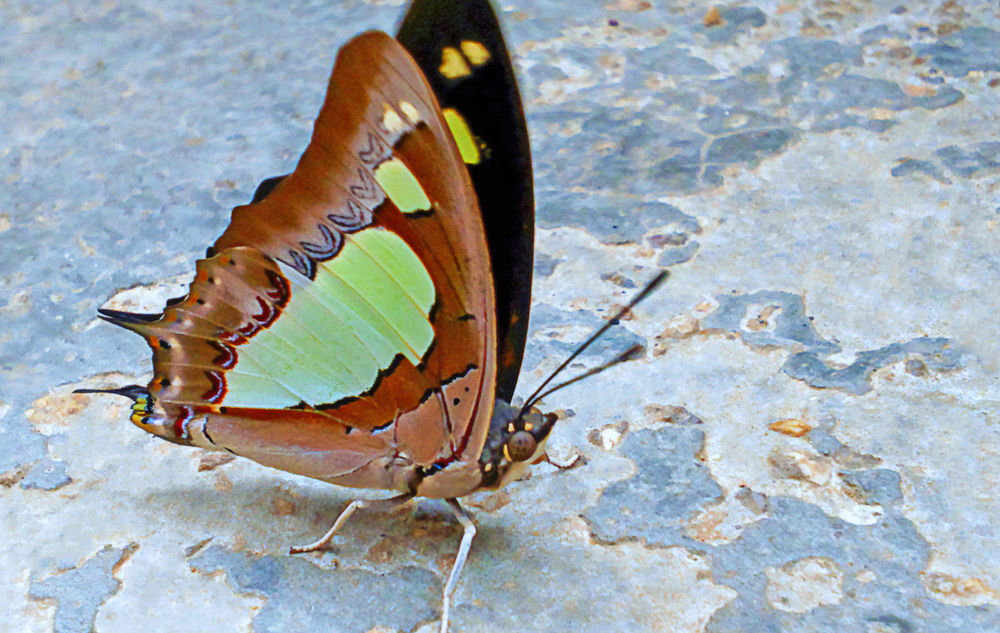Butterfly populations are a very good indicator of the health of an area's ecosystem !!


Polyura athamas can be found in forest areas and tropical rain forest at an altitude of up to 800 m above sea level.
They are attracted to the vibrant colors of flowers, often flitting among blossoms to consume nectar. (Their pollination occurs as they unintentionally transfer pollen on their bodies while feeding from flower to flower, which aids in the reproduction of various plant species.)
Males are often seen absorbing mineral moisture in moist sand, gravel or road surfaces, while females spend most of their life in forest canopies, so they are rarely seen. This species will fly quickly when disturbed.
They have black dorsal wings with pale yellow spots, sometimes with a greenish tinge. The ventral side of the wings is light green with a wide margin of light brown. They have two tails situated on the hind wings.
Females tend to be slightly larger than their male counterparts.
Adult butterflies are most easily spotted when they are feeding on flowers, basking in the sun, or visiting puddles.
They are known for their swift bursts of flight interspersed with gliding movements that create an elegant and almost hypnotic pattern in the air. This mode of flying not only allows for efficient travel but also aids them in avoiding potential predators.
Males are known to be more territorial and can often be seen perching on leaves or branches to guard their territory, making aggressive moves towards other males that wander too close.
The suitable time to find common nawab is usually during the day, particularly in the late morning or early afternoon when temperatures are warmer, and butterflies are most active.
* Common Nawab can remember their birthplace and return to it after long migrations, exhibiting a remarkable memory for a butterfly.
* * As with all members of the Brush Footed (Nymphalidae) family, they use their pair of shorter front legs for food tasting, and their two pairs of longer rear legs for propulsion.
Diet: caterpillars feed on the foliage of various trees and shrubs including Albizia, Acacia, Abarema, Adenanthera, Delonix, Peltophorum and Leucaena (Fabaceae), Grewia (Malvaceae), and Caesalpinia (Caesalpinaceae).
Diet: adults take nectar from the flowers of Ageratum species, Lantana camara, Tridax procumbens, Duranta species, and nectar from various flowering plants
Avg. Wingspan: 6.4 – 8.5 cm / 2.5 – 3.35 “
Family: Nymphalidae
The single biggest threat to butterfly survival is habitat destruction!!




